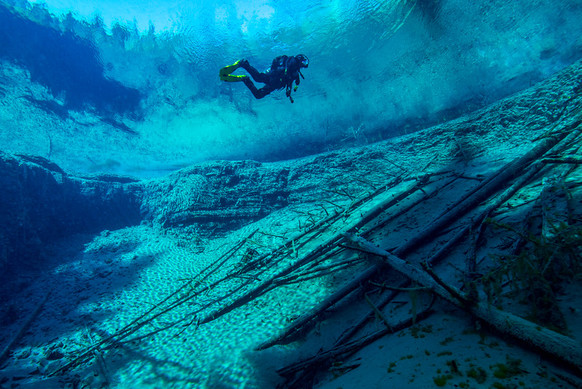Oligotrophic lakes are nutrient poor and therefore tend to have little algae. These lakes are often very clear, meaning you can see deep into the water column. These lakes are usually well oxygenated, even at deeper depths. They tend to support fish that require lots of oxygen in the water.
This is Little Crater Lake in Portland, Oregon. It is 45ft deep with crystal clear waters. This is a great example of an oligotrophic lake.
Location |
|
